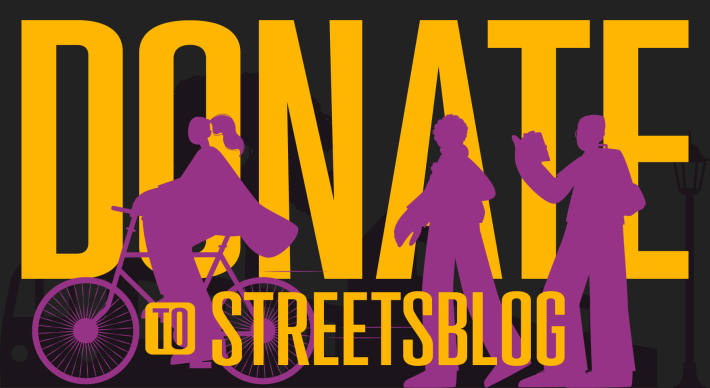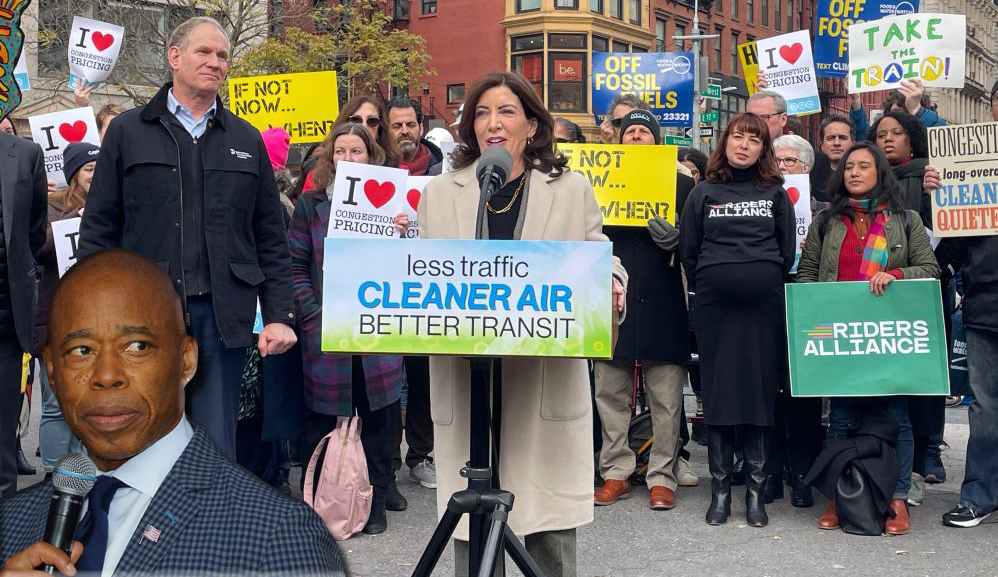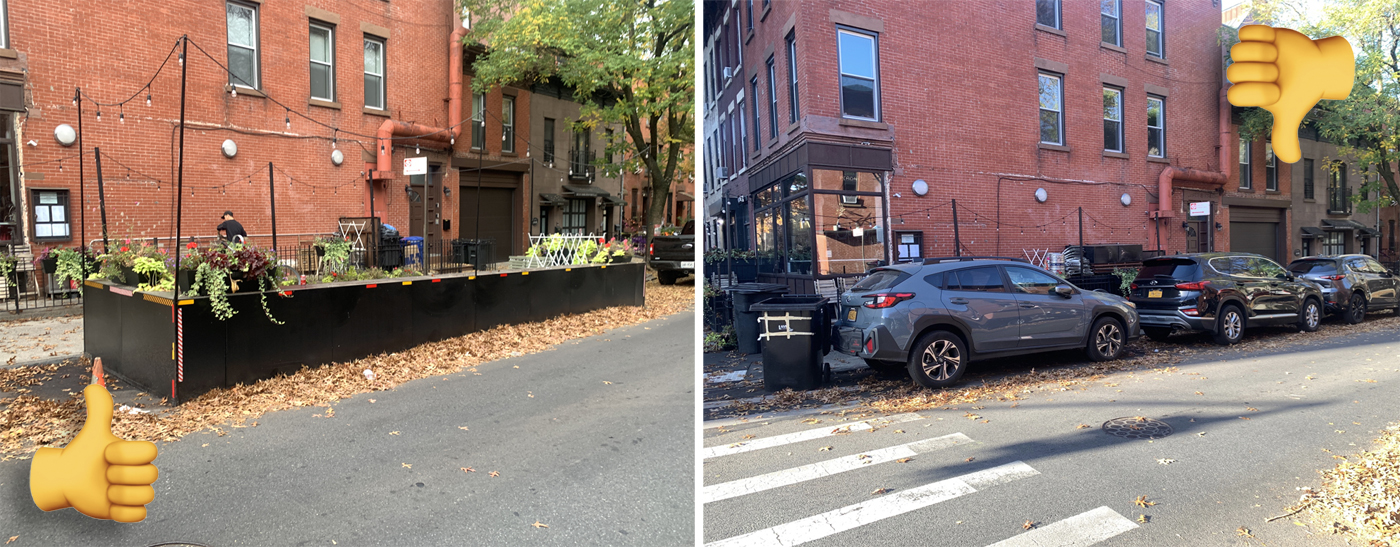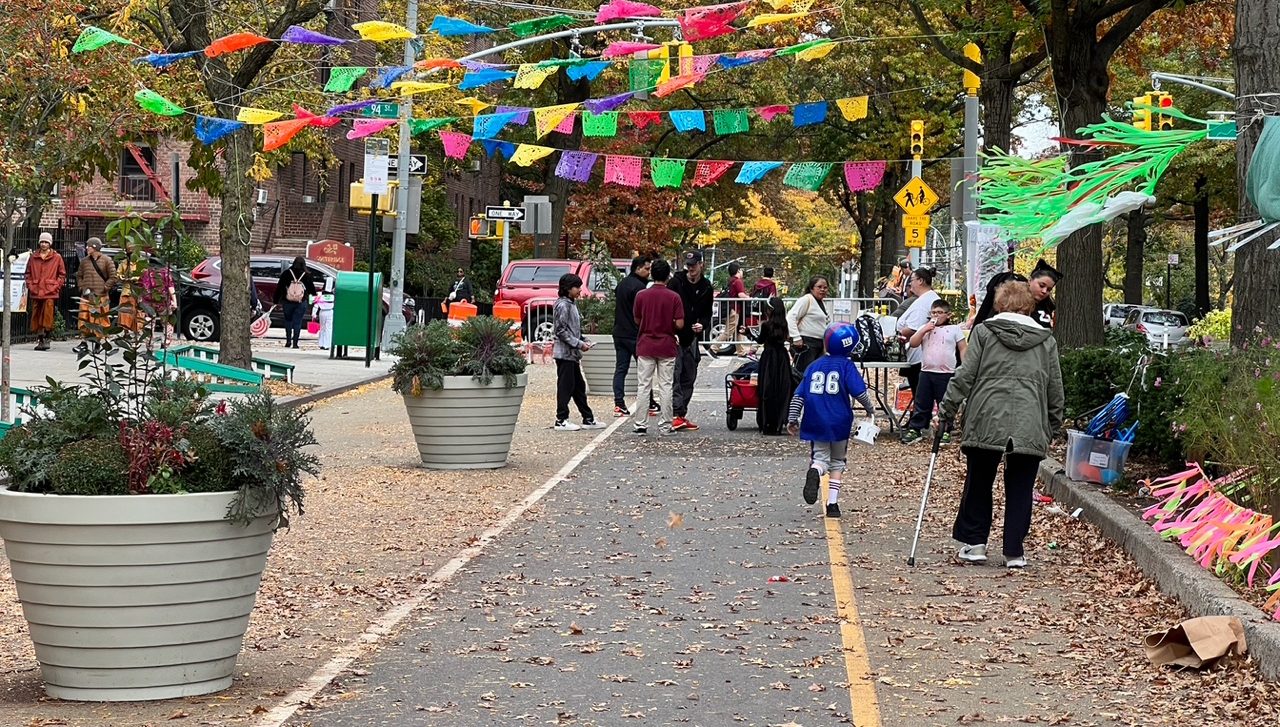
The governor, the head of the MTA and the city's leading transit thinkers all celebrated congestion pricing on Tuesday as an historic moment, while Mayor Adams spent Tuesday failing to live up to it.
The mayor hasn't found a single nice thing to say about congestion pricing in the week since the Traffic Mobility Review Board recommended a $15 toll to drive into the most traffic-choked part of Manhattan, instead leaving it up to subordinates to insist that the city is on board with the program.
Not a single one of Adams's public statements so far has celebrated the potential for cleaner air, or fewer cars in front of buses and emergency vehicles or an influx of funding for necessary subway upgrades — all of which are the reasons New York is instituting congestion pricing. Instead, he's called the final steps of the agonizingly long process to institute the toll "the beginning of a conversation" and groused that the city doesn't get to decide how it will spend the money raised by the toll, even as that money is earmarked specifically to improve the public transit system on which the vast majority of his constituents rely.
Last night on News 12, @nycmayor put a lot of political distance between himself and NYC’s incoming congestion pricing scheme pic.twitter.com/YmmjAjpVye
— Dana Rubinstein (@danarubinstein) December 1, 2023
So on Tuesday, while Gov. Hochul, MTA Chairman and CEO Janno Lieber and and advocates rallied to celebrate congestion pricing and its benefits, Adams again hedged on the idea that congestion pricing will benefit the city.
"I will continue to share our views on this conversation about not displacing the environmental issues to the outer boroughs and making sure that we're not over-penalized in New York," the mayor said at his weekly press conference.
It's true that Adams grudgingly and off-handedly mentioned that he supported congestion pricing, but he let Deputy Mayor for Operations Meera Joshi praise the program as one that will help the city "face the climate crisis ... and really support the public transit system." As much as he says he is a "strong supporter," Adams's public comments lately have indicated little support, let along strong.
Perhaps it doesn't really matter why the mayor is approaching congestion pricing the same distant and disinterested way Zach Wilson is currently approaching playing quarterback for the Jets. Nor does it matter that the mayor campaigned as a congestion pricing supporter and that his panel to create a New New York repeatedly emphasized congestion pricing as a major piece of a city that works for everyone.
What matters is that the mayor's Heisman-like stiff arm towards congestion pricing means he could mess up some key parts of the initiative that he has to get right.
For instance, when a reporter asked him on Tuesday what his plan was for the "inevitable" moment when drivers looking to avoid the congestion toll flooded Long Island City and Upper Manhattan looking for parking, the mayor could have shown he's a regular reader of Streetsblog and replied that the environmental assessment itself, and reams of research on other cities that instituted congestion pricing, showed that drivers don't park on the very edge of the toll zone. He could have said the city will be communicating early and often that people shouldn't try it, because those neighborhoods are hardly parking paradises to begin with.
Instead, the mayor just said it was "one of our top concerns" and left it at that.
And crucially, Adams has not embraced the coming reduction in cars as an opportunity to implement major street redesigns that emphasize pedestrians, cyclists and bus riders. In terms of making sure that congestion pricing works, this is where Adams can have the biggest impact on ensuring it brings lasting and positive change to New York City.
Not only has Adams failed in two years on the job at the task of connecting better bus routes or bike routes to a better transportation system under congestion pricing, he's actually kneecapped key projects to expand bike connections near or into Manhattan.
The sudden removal of a crucial block of the Ashland Place protected bike lane, stalling more cycling and pedestrian space on the Queensboro Bridge, and instituting a plan on McGuinness Boulevard that sacrifices safety on a connection to the Pulaski Bridge and the western Queens bike network are abdications of responsibility for making the city work and making congestion pricing work.
City buses are as slow as ever, and even though there will be less traffic in Downtown Brooklyn when congestion pricing begins, there's not a hint of a clue of what Adams will do for buses on the Downtown stretch of Flatbush Avenue where buses move under five miles an hour on average.
Adams has been consistent in his worries about the plan, and has made his wishlist of changes to it both vague (don't punish an undefined class of people who "have to" drive — a group that no doubt includes public sector workers whose support the mayor will desperately need if he's primaried) and specific (exempt yellow cab customers from the new $1.25 fee on trips to, from or in lower Manhattan). But with his worries on the record, it's time for him to get off the sidelines and explain what he's going to do to seize the congestion pricing moment and make the toll work for New York.
Or, as top Swedish transport official Jonas Eliasson told Streetsblog a decade after Stockholm began central business district tolling, "I don't think you should be so concerned with not congestion pricing not working — it just does work. It will free up road space, which means less congestion. And then you will get money, which you can spend in various ways.
— with Julianne Cuba






